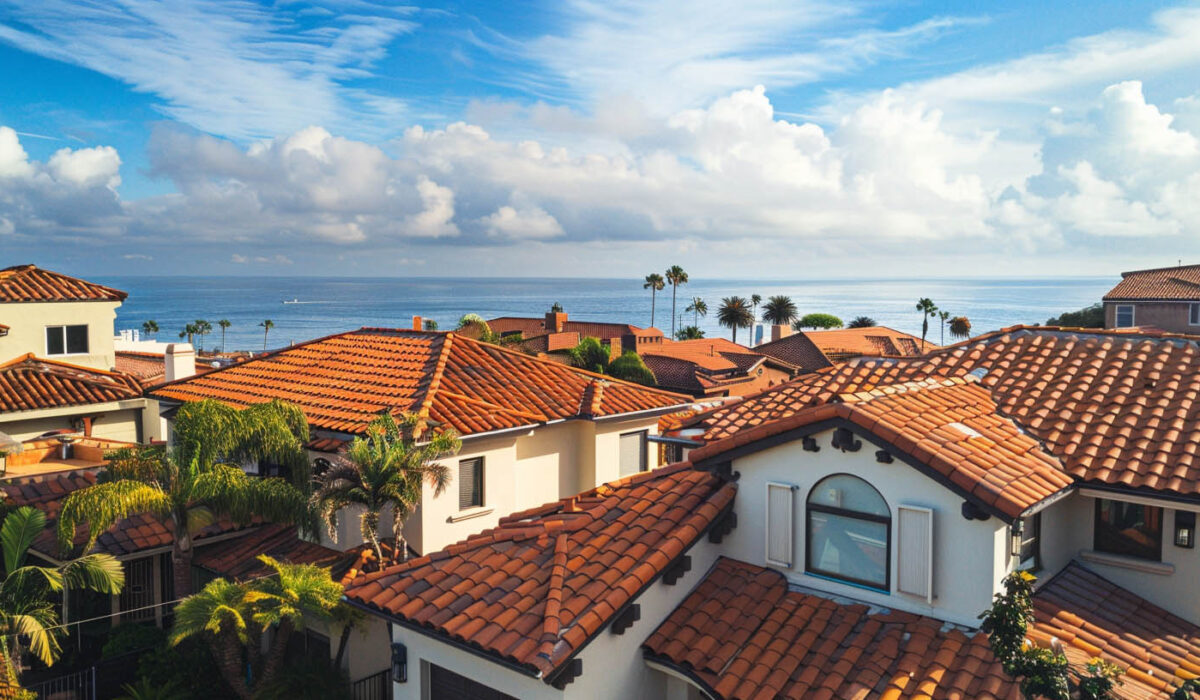Coastal San Diego, CA presents unique challenges for homeowners, particularly regarding roofs. The pervasive salt air can significantly affect the longevity and appearance of tile roofs. At Tile Roofing San Diego, we understand how salt air interacts with different roofing materials, making it crucial to prevent future issues. Our team emphasizes regular maintenance and inspections to ensure your roof’s structural integrity and longevity. With our expertise in caring for tile roofs, we provide peace of mind, safeguarding your home and potentially avoiding expensive repairs down the line.
Understanding Salt Air Exposure in Coastal San Diego
Salt air exposure in Coastal San Diego presents distinct challenges for homeowners. The nearby ocean releases moisture and salt particles into the atmosphere, which can lead to salt air corrosion on roofing materials, particularly tile and metal components. This environment exacerbates structural damage over time, impacting the durability and overall lifespan of roofs. Understanding these coastal conditions enables San Diego homeowners to adopt proactive measures, ensuring that their roofs maintain structural integrity and resist the harmful effects of salt exposure.
Contact UsWhy Salt Air Is Unique to the San Diego Coastline
Salt air in San Diego mainly comes from the nearby ocean and the area’s Mediterranean climate. The sea and local winds work together to move salt in the air. This creates certain conditions in the atmosphere that can affect buildings, especially roofs. Salt air makes roofing materials wear out faster because it causes them to rust and break down. The high UV exposure in San Diego and moisture buildup also damage roofs. All these things can lead to problems with the structural integrity of properties near the coast over time.
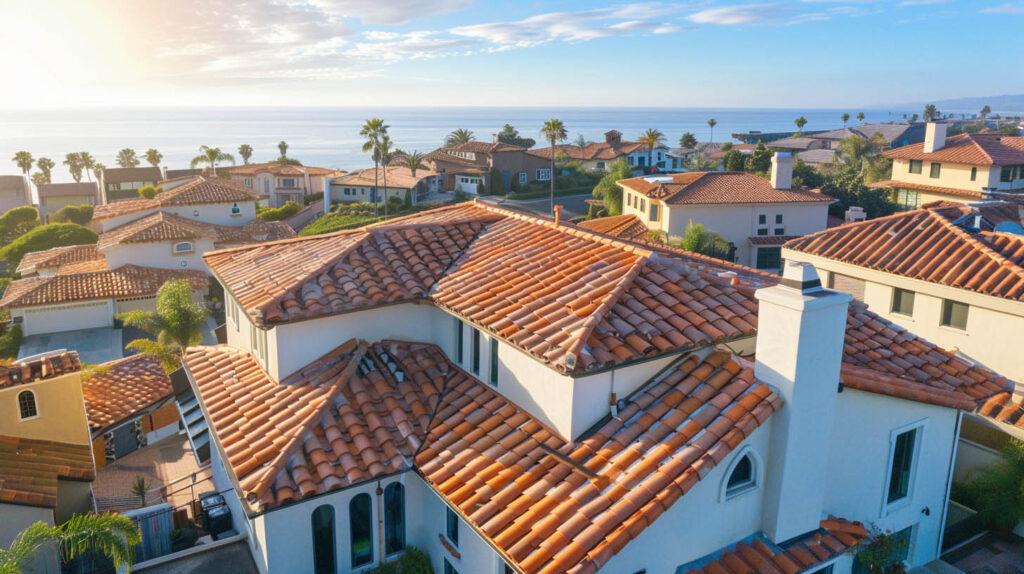
The Science Behind Salt and Its Impact on Building Materials
Salt exposure has a big impact on how long building materials last in coastal environments. In places like San Diego, CA, when salt-filled moisture gets into roofing parts, the metal can rust, and the roof’s surface can break down. This can make things like cracks or flakes show up faster because of the way salt crystals push out on the material. It is important for San Diego homeowners to know about these problems. This helps them choose the right way to protect and look after their homes in this coastal area.
How Salt Air Impacts Tile Roofs
Salt air exposure poses significant challenges for tile roofs in coastal San Diego. Over time, the corrosive nature of salt can weaken the structural integrity of roofing materials, leading to increased wear and tear. Homeowners should be vigilant about common signs of deterioration, such as discoloration and surface pitting. Regular inspections and effective maintenance are essential to ensure the longevity of your roof, helping to mitigate costly repairs and preserve both aesthetics and functionality in the face of harsh coastal conditions.
Effects on the Durability of Tile Roofs
Exposed to coastal conditions, tile roofs face unique challenges that impact their durability over time. Salt air corrosion can weaken roofing materials, leading to structural damage and a reduction in the lifespan of your roof. Regular maintenance, including inspections for missing shingles and moisture buildup, is essential to uphold structural integrity. With San Diego’s intense sun exposure and wet winters, employing protective coatings and ensuring proper ventilation can significantly enhance the longevity of your roof, benefiting homeowners in coastal areas.
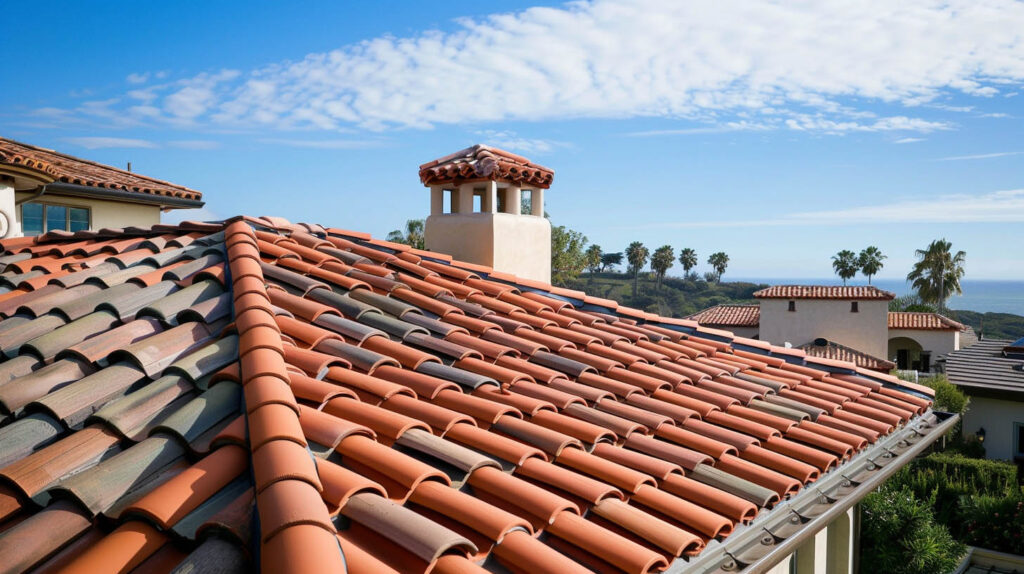
Common Appearance Changes Caused by Salt Exposure
An array of appearance changes can indicate salt exposure’s impact on tile roofs. A faded color palette often emerges, as UV rays and salt air interact, diminishing the vibrant hues of tiles. Additionally, the accumulation of salt can lead to efflorescence, causing unsightly white streaks on the surface. In some cases, cracks may develop due to moisture buildup facilitated by coastal conditions. Addressing these issues promptly aids in preserving the overall aesthetic and functionality of tile roofing systems, ensuring they remain visually appealing.
Essential Maintenance Steps for Protecting Tile Roofs
Implementing essential maintenance steps is crucial for maximizing the longevity of your tile roof in coastal environments. Regular roof inspections by a professional roofing contractor can identify signs of wear and salt air corrosion. Maintaining proper ventilation helps prevent moisture buildup, which is vital in the Mediterranean climate of Southern California. Adopting a cleaning routine focused on salt removal ensures that your roofing materials, such as clay tiles, remain in optimal condition, safeguarding against structural damage and costly repairs.
Cleaning Routines for Salt Removal and Longevity
Regular cleaning routines are essential for maintaining the longevity of tile roofs in coastal environments like San Diego, CA. Salt accumulation can lead to corrosion and structural integrity issues, making it vital to schedule cleanings more frequently than in inland areas. A professional roofing contractor can recommend the right materials and protective coatings to remove salt and prevent moisture buildup. This proactive approach not only preserves your roof’s aesthetics but also enhances energy efficiency, ultimately extending the life of your roof.
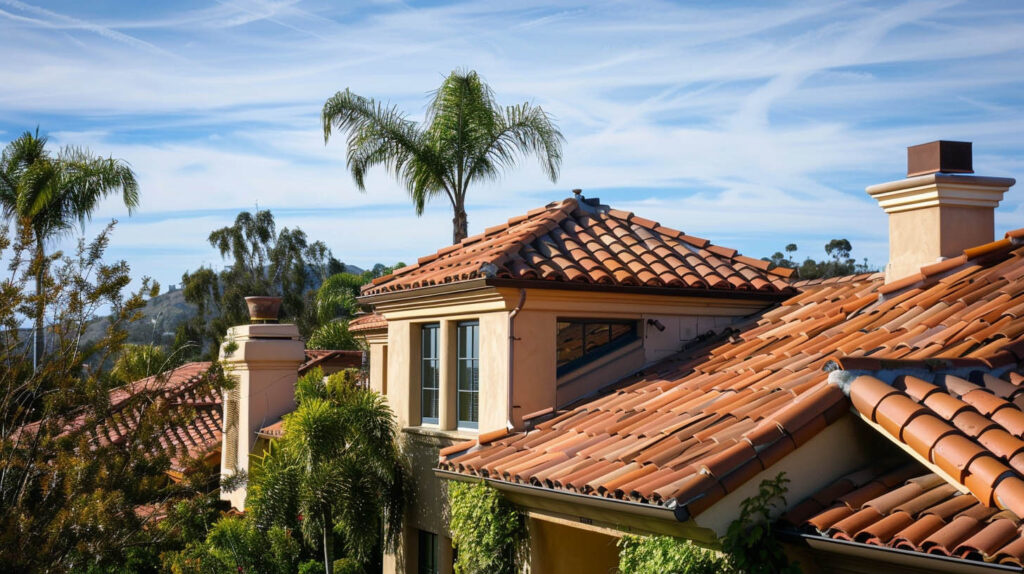
Frequency of Roof Inspections and Key Areas of Focus
Regular roof inspections are crucial for maintaining the integrity of tile roofs in coastal San Diego. Homeowners should conduct these inspections at least twice a year, particularly after severe weather events like Santa Ana winds or heavy rain. Key areas of focus include checking for missing shingles, signs of wear, and any potential salt air corrosion on metal components. The structural integrity of the roof can be compromised if moisture buildup or UV exposure goes unchecked, leading to costly repairs that could affect the overall lifespan of your roof.
Why Choose Tile Roofing San Diego for Coastal Projects
Tile roofing is a smart pick for homes near the coast in San Diego, CA. Tile roofs do well with salt air and strong weather. They last many years because they hold up against high winds, uv exposure, moisture buildup, and salt air corrosion. When you pick the right materials and work with certified roofing contractors, you stay within local building codes. You also boost energy efficiency and make the roof’s life longer. This good mix helps keep the structural integrity. It also gives people more peace of mind with their home.
Certified Expertise: GAF Master Elite & Owens Corning Preferred Contractor
Choosing a certified contractor is important for any tile roofing project. The best contractors, like GAF Master Elite and Owens Corning Preferred Contractors, know a lot about working in coastal environments, such as San Diego. These experts understand how salt air and strong UV exposure can affect your roof. They help to lower risks that might hurt the roof’s structural integrity or how long it lasts. When you work with these professionals, san diego homeowners get peace of mind. You know your roof is built using good materials and strong methods.
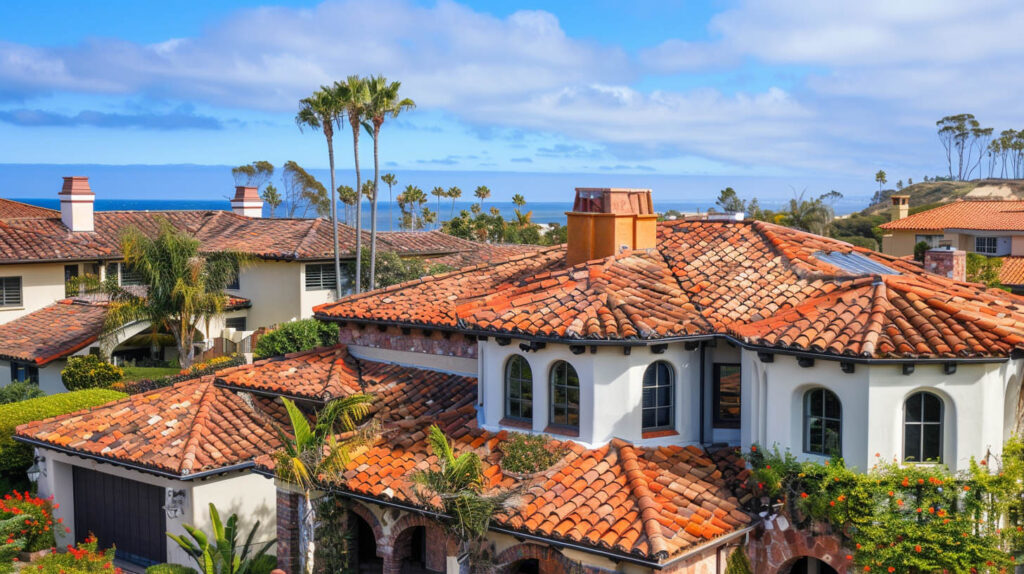
Specialized Solutions for Tile Roof Protection and Restoration
Putting special solutions in place for your tile roof helps make your coastal home last and keep its strength. Using protective coatings keeps your roof safe from salt exposure and can stop corrosion. When experts put these coatings on, your roof is better protected from high winds and uv rays. Doing regular inspections with trained roofing contractors lets you spot signs of wear or water damage early, which helps to avoid costly repairs. If san diego homeowners focus on these steps, they get peace of mind knowing their roofs are ready for all the tough problems that come with living by the water.
Call Us 619-350-1086In Summary
The life and strength of tile roofs in coastal San Diego rely on knowing how salt air affects them. The salt air can damage roofing. If you pick the right materials like strong concrete or clay tiles, your roof will last longer. Regular maintenance and checking your roof matter a lot. Also, using protective coatings on your tile roofs can help to cut down the harm. Working with a professional roofing contractor can give you peace of mind. The contractor will help to keep up your roof and choose good materials for coastal homes. Doing this can keep the structural integrity and beauty of your home. It also lets you get the most years out of your roof.
Frequently Asked Questions
How long do roofs last in San Diego?
Roofs in San Diego can last anywhere from 20 to 50 years. This depends on what the roof is made of, how you care for it, and the weather. Being close to the coast, the salt air can wear down roofs faster. Because of that, it is a good idea to check on the roof and keep up with maintenance more often.
What is the best roof for salt air?
The best roofing materials for salt air environments include tile and metal, as they resist corrosion and deterioration. Specifically, clay and concrete tiles offer durability against salt exposure while maintaining aesthetic appeal, making them an ideal choice for coastal properties in San Diego.
Read our blog: Tile Roof Restoration vs. Replacement: How to Choose the Best Option for Your Home

